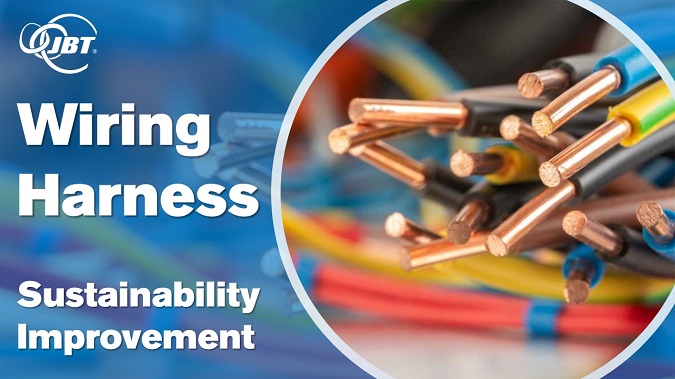In the world of Automated Guided Vehicles (AGVs), efficiency is paramount. Every aspect of their design and assembly process is scrutinized for opportunities to streamline operations, cut costs, and minimize waste. Recently, a closer examination of AGV harnesses revealed two key areas where improvements could be made: excess cable lengths and wiring termination issues.
The Situation:
AGV harnesses often incorporate build-to-length cables, which are initially purchased at a fixed length and then trimmed to fit specific requirements. However, upon evaluation, it became apparent that a significant portion of these cables ended up being trimmed to excess lengths of up to 4 meters. These excess lengths were then discarded and recycled, representing both a financial loss and a waste management challenge.
Additionally, AGV assemblers faced frequent termination and wiring issues when connecting wires from multiple sensors to bulkhead fittings on the forklift carriage. These issues led to numerous hours being lost in troubleshooting and correcting wiring problems, delaying the production process and increasing labor costs.
The Solution:
To address these challenges, a comprehensive solution was implemented. Firstly, the inappropriate cable lengths were replaced with cables of appropriate lengths, eliminating the need for excessive trimming and reducing waste. This not only saved material costs but also simplified the assembly process, enhancing efficiency.
Secondly, a new approach was adopted for wiring termination. Instead of relying on AGV assemblers to terminate wires onto bulkhead fittings, the sensor harness cables were redesigned to come pre-terminated with the fittings by harness fabricators. This change ensured reliable and efficient terminations, minimizing wiring errors and reducing the time spent on debugging and testing AGVs.
The Impact:
The implementation of these solutions had a significant impact on both efficiency and sustainability within the AGV production process. By reducing excess cable lengths and minimizing wiring termination issues, valuable time and resources were saved, leading to increased productivity and cost savings.
Furthermore, the reduction in waste generation contributed to a more environmentally sustainable operation. With fewer materials being discarded and recycled, the company demonstrated its commitment to responsible resource management and corporate social responsibility.

Conclusion:
The case of waste reduction and material cost savings in AGV harnesses serves as a testament to the importance of continuous improvement in manufacturing processes. By identifying and addressing inefficiencies, companies can not only enhance their bottom line but also contribute to a more sustainable future.
As technology continues to evolve and industries strive for greater efficiency, initiatives like these will become increasingly essential. Through innovation and collaboration, we can drive positive change and build a brighter tomorrow for both businesses and the planet.

